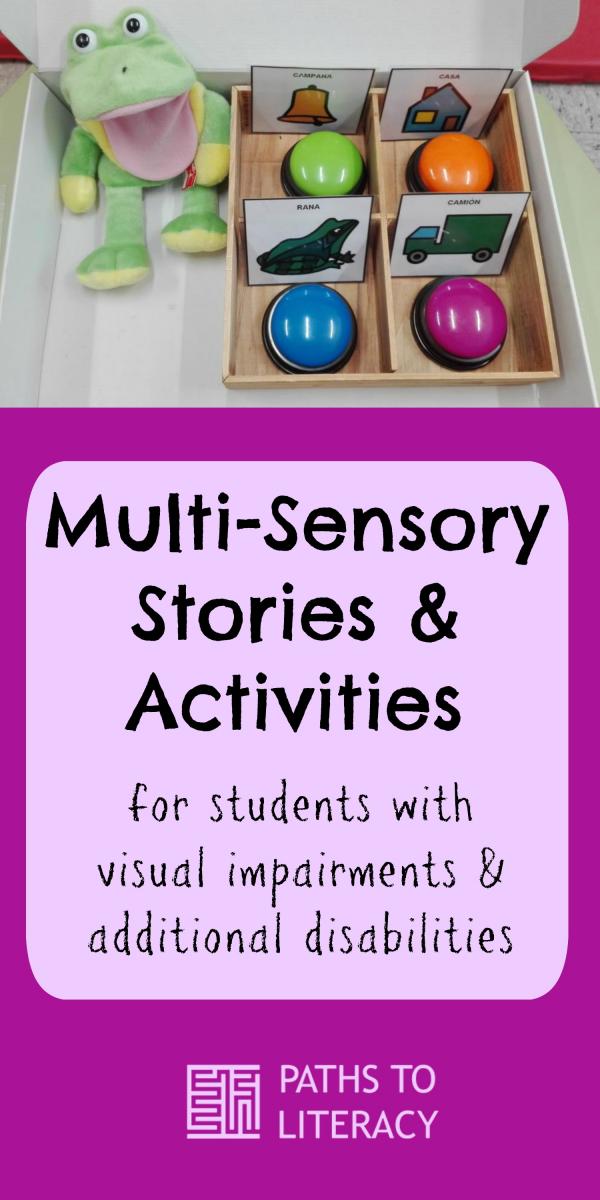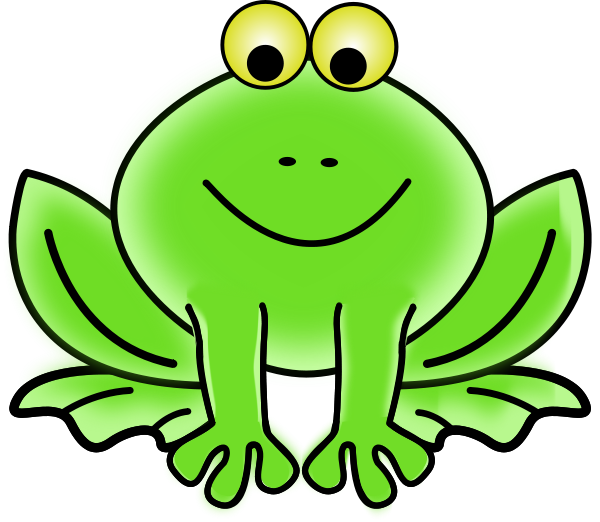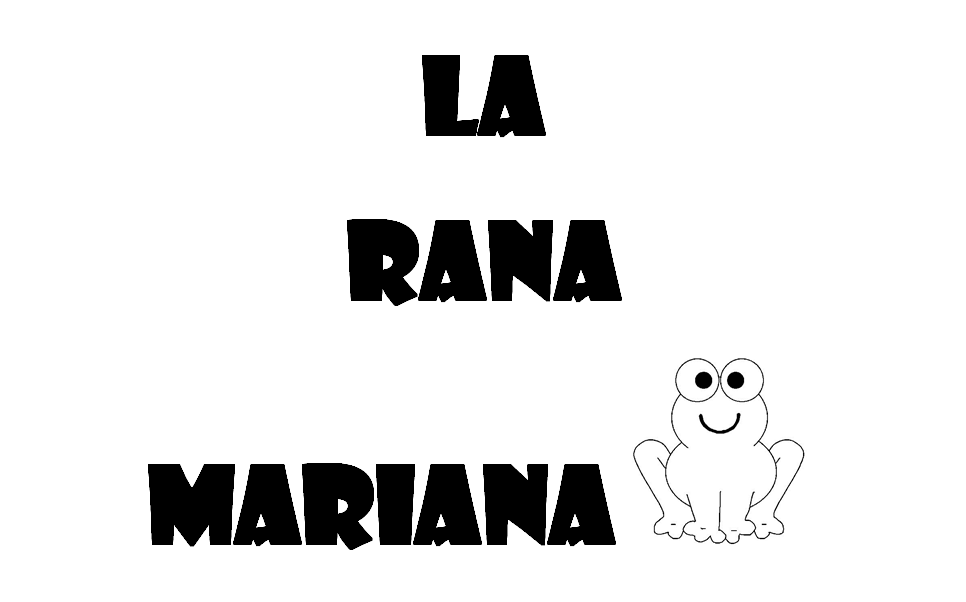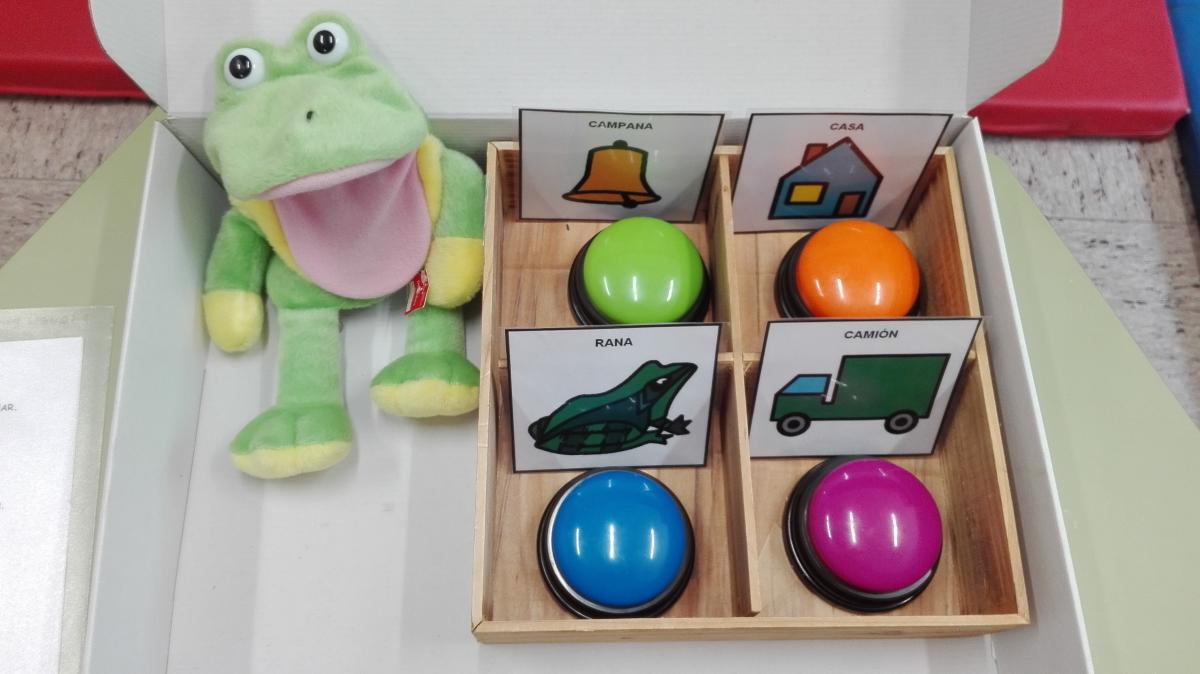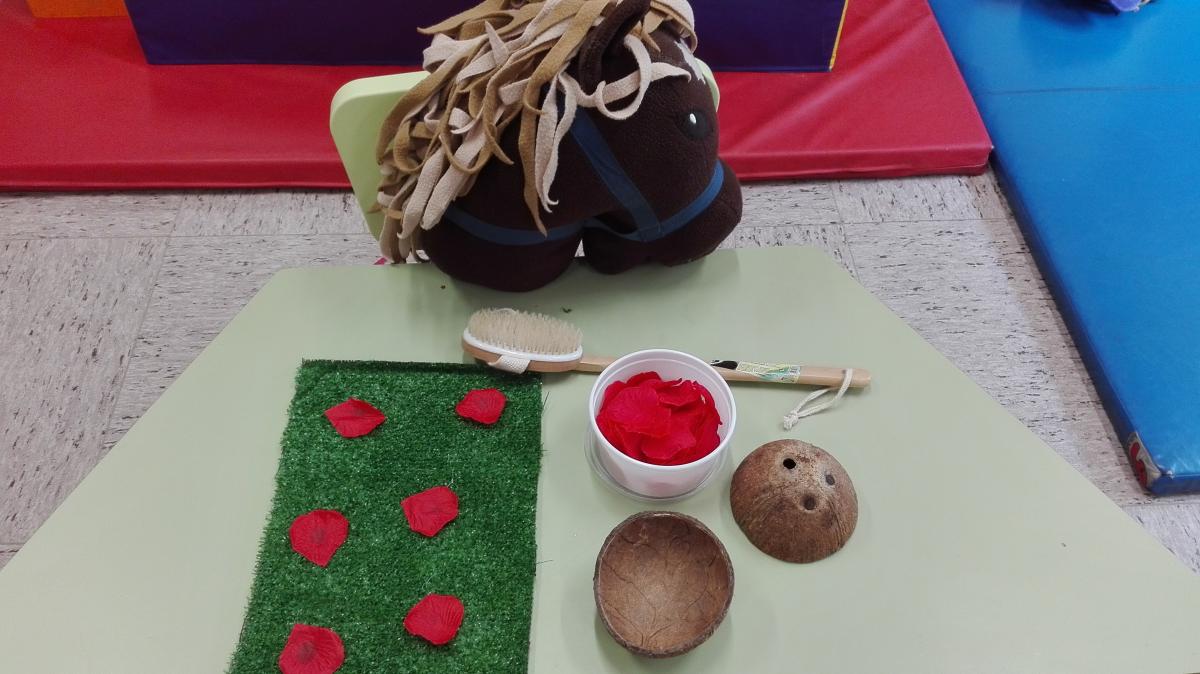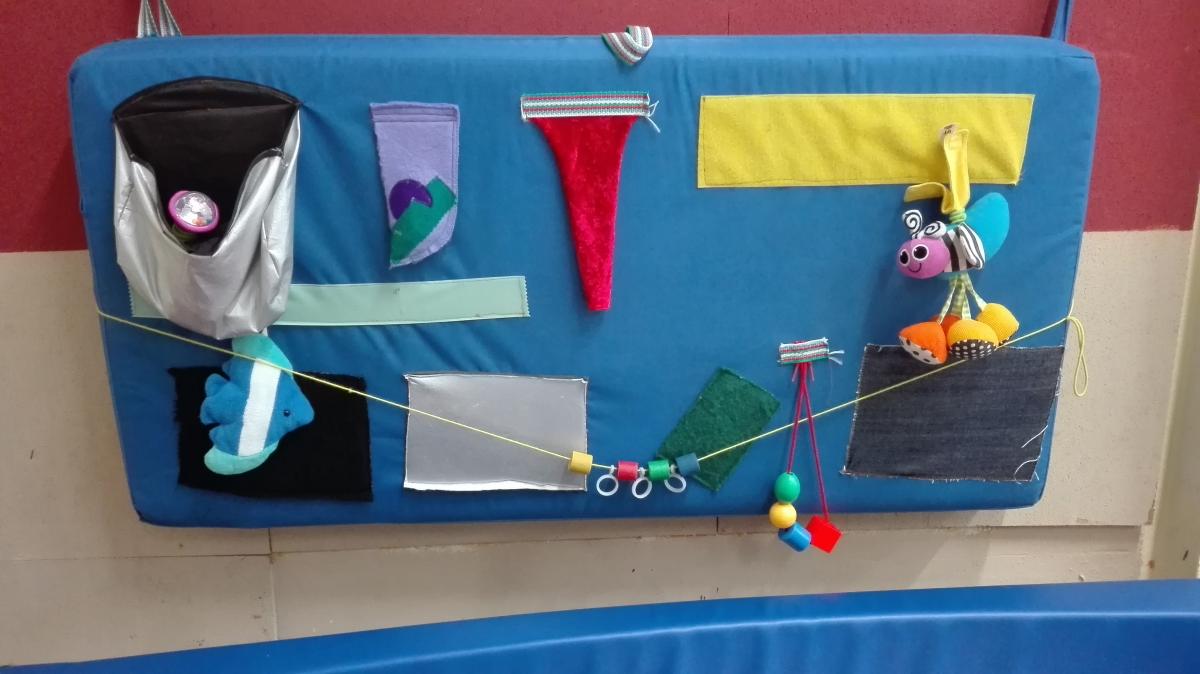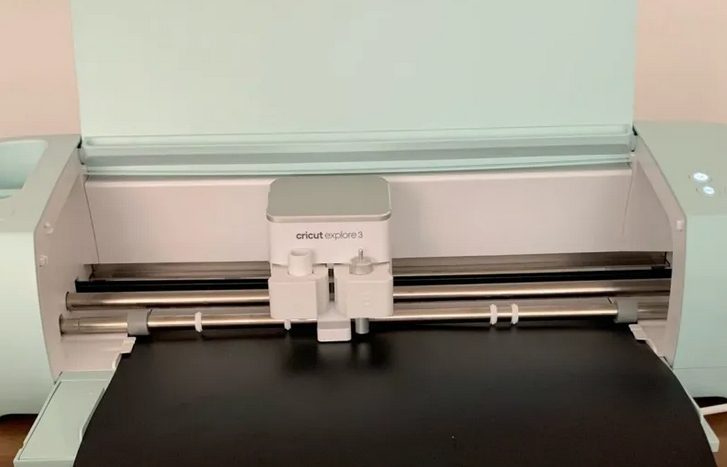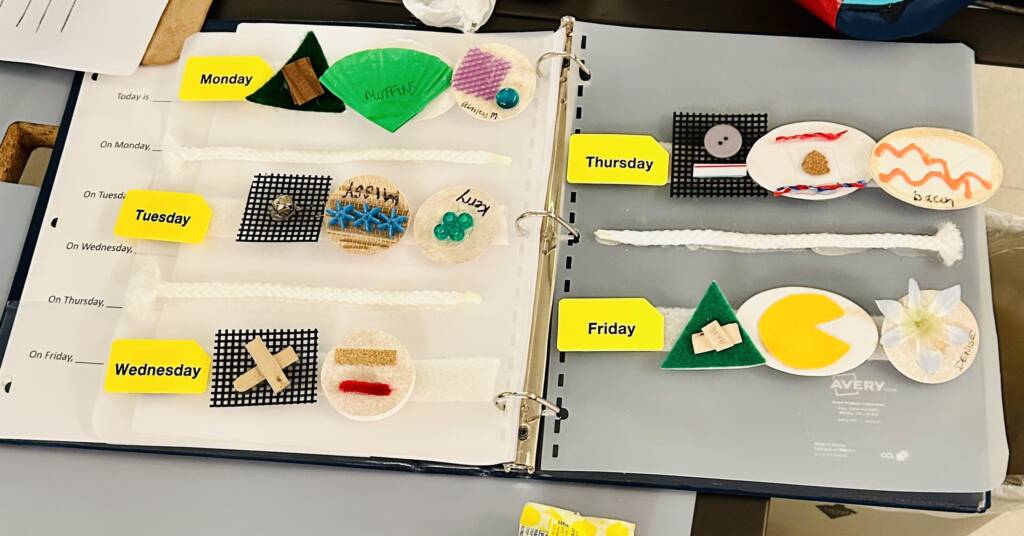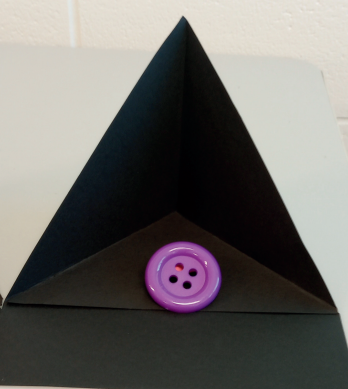I am a teacher in a school for special education in Madrid, Spain and the materials here were created for students who are blind with Cerebral Palsy. I have included two examples of adapted stories with objects, picture cards, switches with auditory output, and multi-sensory elements, as well as ideas for creating an activity wall.
Adapted Story with Switches
We also have an adapted tale with switches. The text is in Spanish, since it is a rhyme. The story is titled “Mariana The Frog” (La Rana Mariana en español).
UNA MAÑANA LA RANA MARIANA SALIÓ A PASEAR.
ANDUVO Y ANDUVO HASTA A LA CARRETERA LLEGAR.
DE REPENTE UN CAMIÓN HIZO EL CLAXON SONAR.
“¡QUÉ SUSTO!” , PENSÓ LA RANA, Y SE PUSO A SALTAR.
LA RANA A SU CASA SE QUERÍA MARCHAR.
Y LAS CAMPANAS LE AVISARON QUE LA HORA LLEGABA YA.
SALTANDO, SALTANDO A LA CASA LLEGÓ.
Y CON EL SUSTO EN EL CUERPO, EL TIMBRE TOCÓ.
Translation:
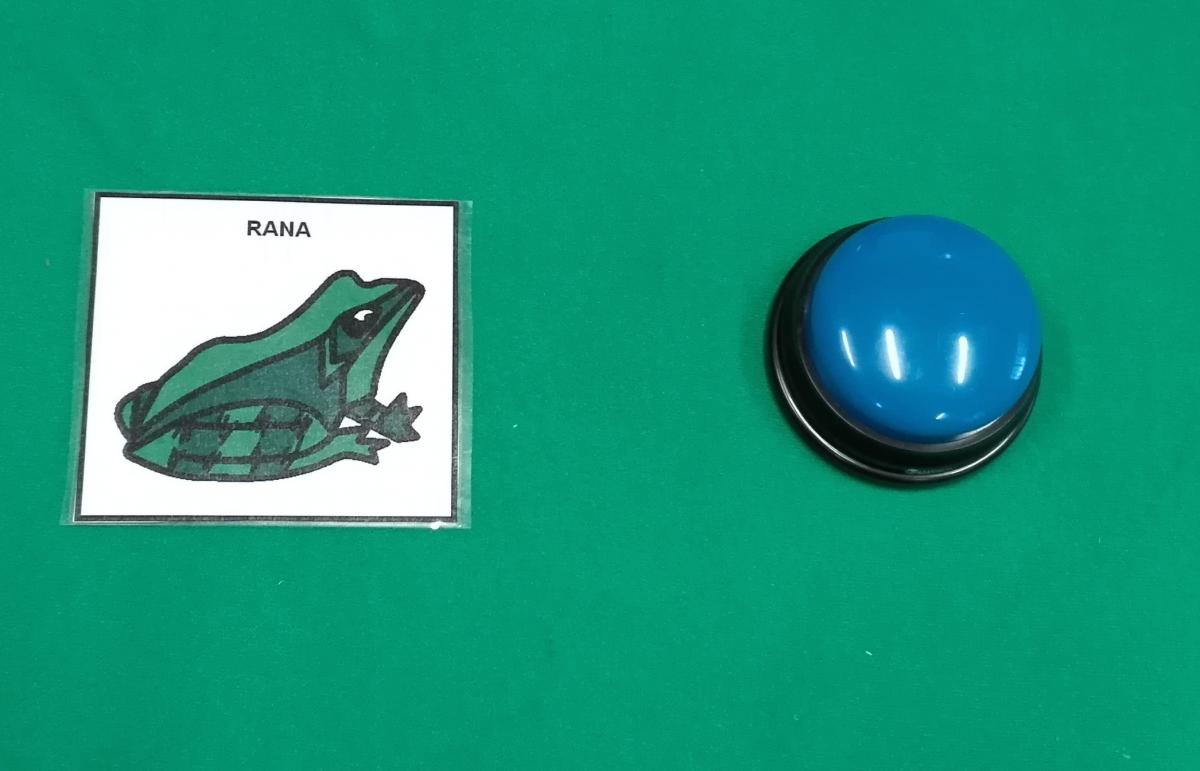
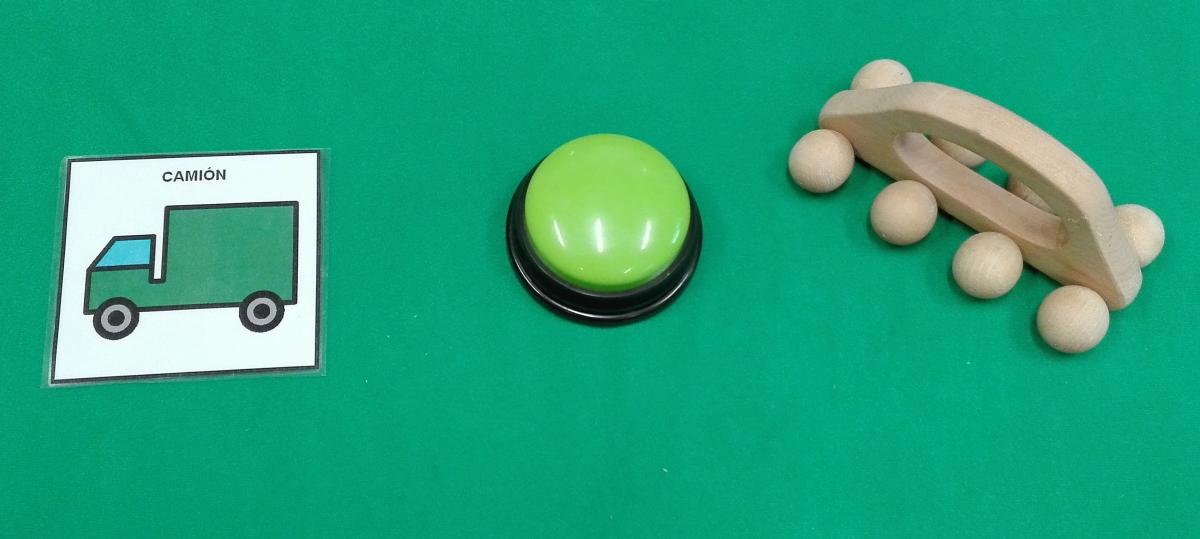
Adapted Story with Multisensory Cues
We also have a multi-sensory story entitled “Pelayo The Horse” (or El Caballo Pelayo). The story is about horse that goes for a walk (we make the coconuts sound at the same time, at a trot and at a gallop). He likes to rest in the grass, so we use a panel made with artificial turf and perfumed petals). Finally, the horse returns (with the coconuts sounds).
EL CABALLO PELAYO (en español)
HABÍA UNA VEZ UN CABALLO MUY PRESUMIDO LLAMADO PELAYO, TENÍA UNA BONITA COLA Y TODOS LOS DÍAS LA PEINABA CON MUCHO CUIDADO (CEPILLO). A VECES SE DABA TIRONES Y DECÍA: “AY, AY, AY”.
DESPUÉS DE PEINARSE, PELAYO SE IBA A DAR UN PASEO POR EL CAMPO.
PRIMERO CAMINABA DESPACIO, “AL PASO, AL PASO”. DESPUÉS, EMPEZABA A TROTAR “AL TROTE, AL TROTE “. Y , POR ÚLTIMO, A GALOPAR “A GALOPE, A GALOPE, A GALOPE” (MOVIMIENTOS RÍTMICOS GOLPEANDO LAS MITADES DE UN COCO).
LE GUSTABA TUMBARSE EN LA HIERBA Y OLER LAS FLORES (CÉSPED Y PETALOS).
DESPUÉS DE JUGAR EN EL CAMPO, VOLVÍA MUY ALEGRE A CASA. PRIMERO CAMINABA DESPACIO, “AL PASO , AL PASO”. DESPUÉS, EMPEZABA A TROTAR “AL TROTE, AL TROTE “. Y, POR ÚLTIMO, A GALOPAR “A GALOPE, A GALOPE, A GALOPE” (MOVIMIENTOS RÍTMICOS GOPEANDO LAS MITADES DE UN COCO).
Pelayo The Horse (English Translation)
If possible, visit a real horse to brush him and to experience what a horse is like.
Once upon a time, there was a horse called Pelayo. He had a beautiful tail and every day it was brushed very carefully. (brush) Sometimes it was yanked and he said “Ow, ow, ow”.
After being brushed, he would go to have a walk through the field.
First he walked slowly, step by step. Then he started to trot; “trot, trot, trot”. Finally, he galloped; “galloping, galloping, galloping”. (Make rhythmic movements hitting the coconut halves together.)
He liked to walk on the grass and smell the flowers. (astroturf and flower petals)
After playing in the field, he was very happy when he got back home.
First he walked slowly, step by step. Then he started to trot; “trot, trot, trot”. Finally, he galloped; “galloping, galloping, galloping”. (Make rhythmic movements hitting the coconut halves together.)
Creating Activity Wall in Classroom
We have created a special part of the classroom for a student with cortical visual impairment (CVI). Here we have placed a small cradle, for space delineation, security and to encourage exploration. On the wall, we have included a mat with various textures, wide Velcro tape to attach sound-producing objects, a small bag with objects inside that can be removed, etc. Our goal is to gradually expand this space and place another panel with musical instruments and push buttons to be activated. This material was made with the help of the teacher of the school sewing workshop, three years ago.
